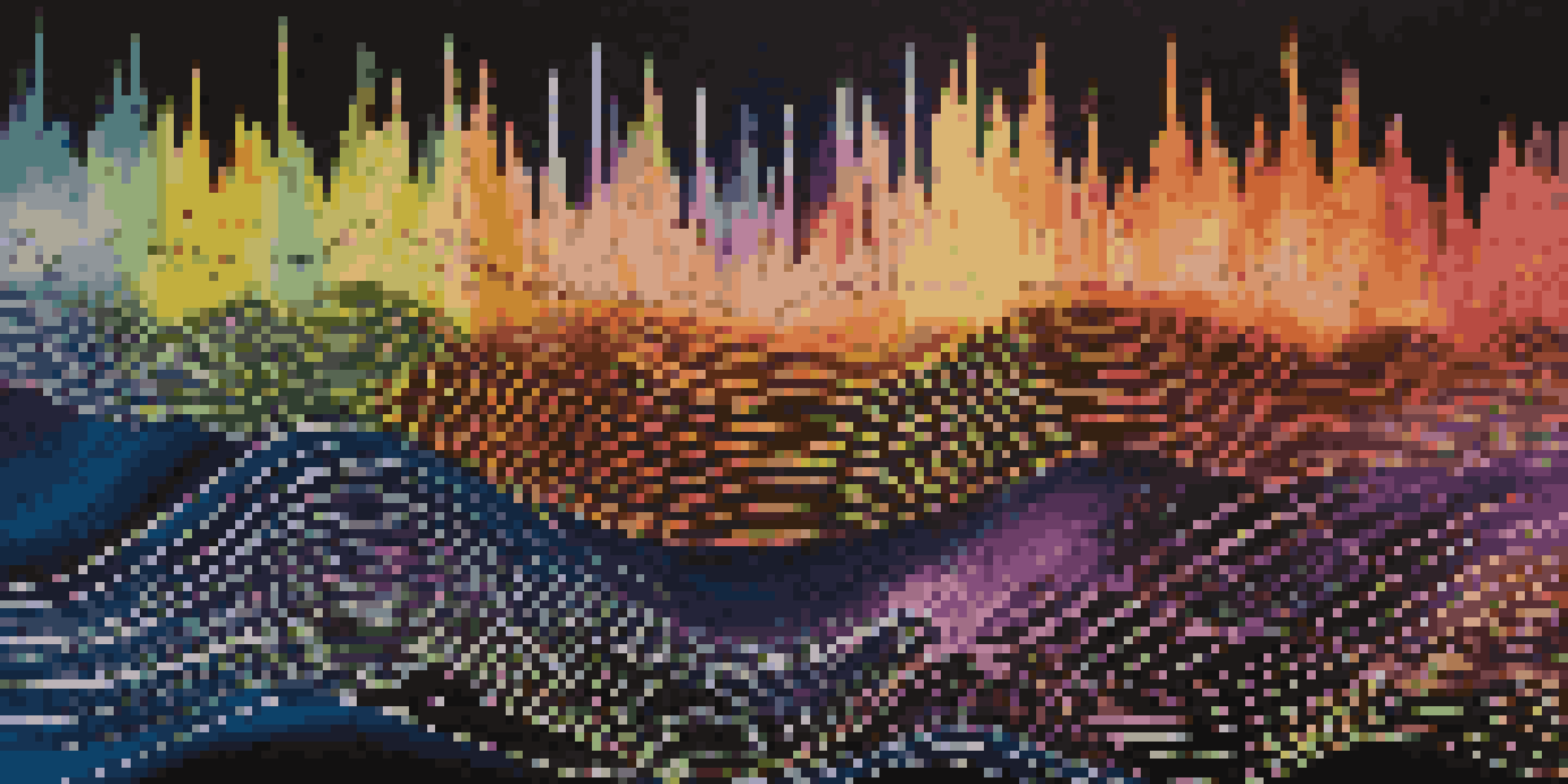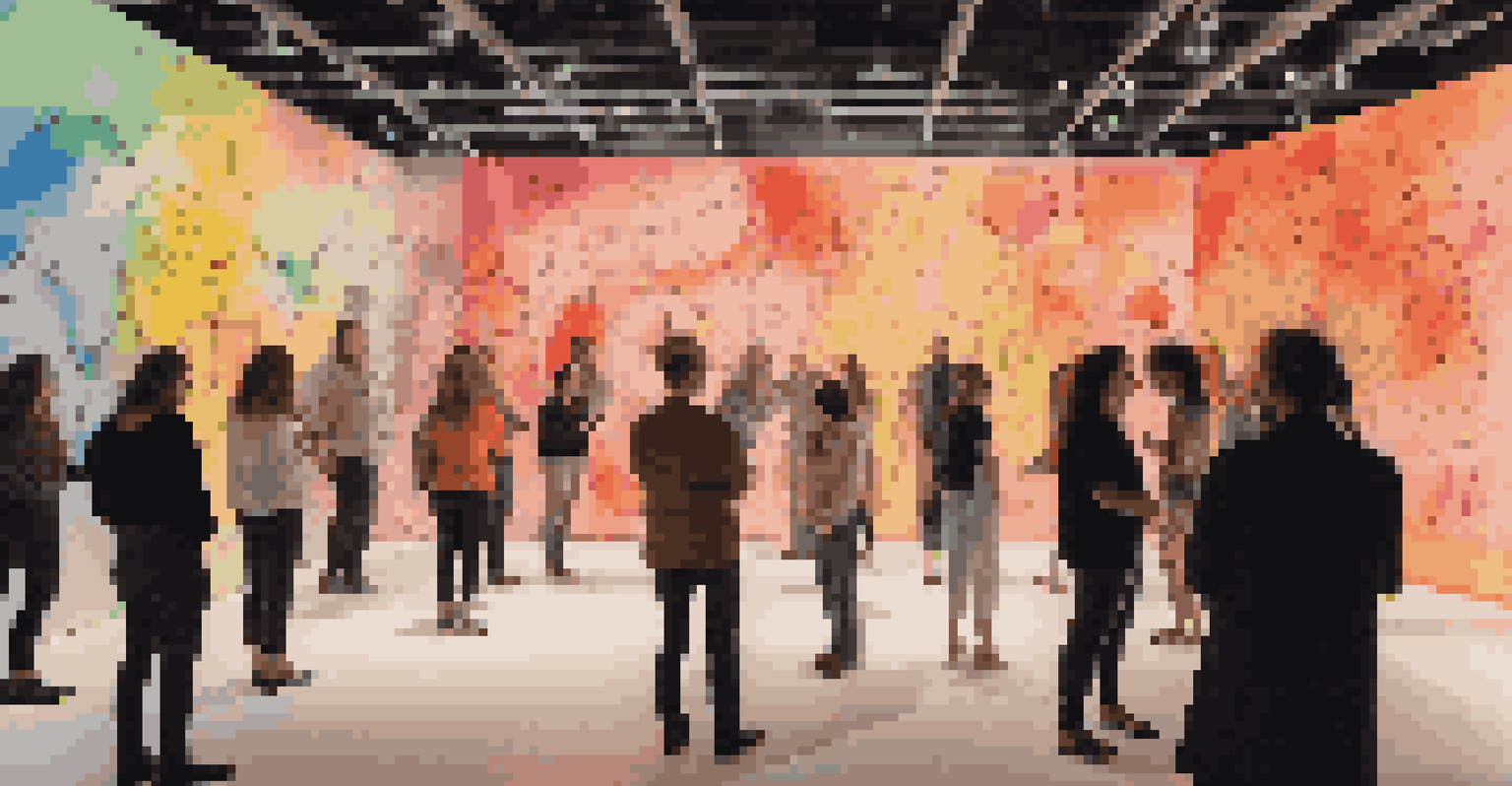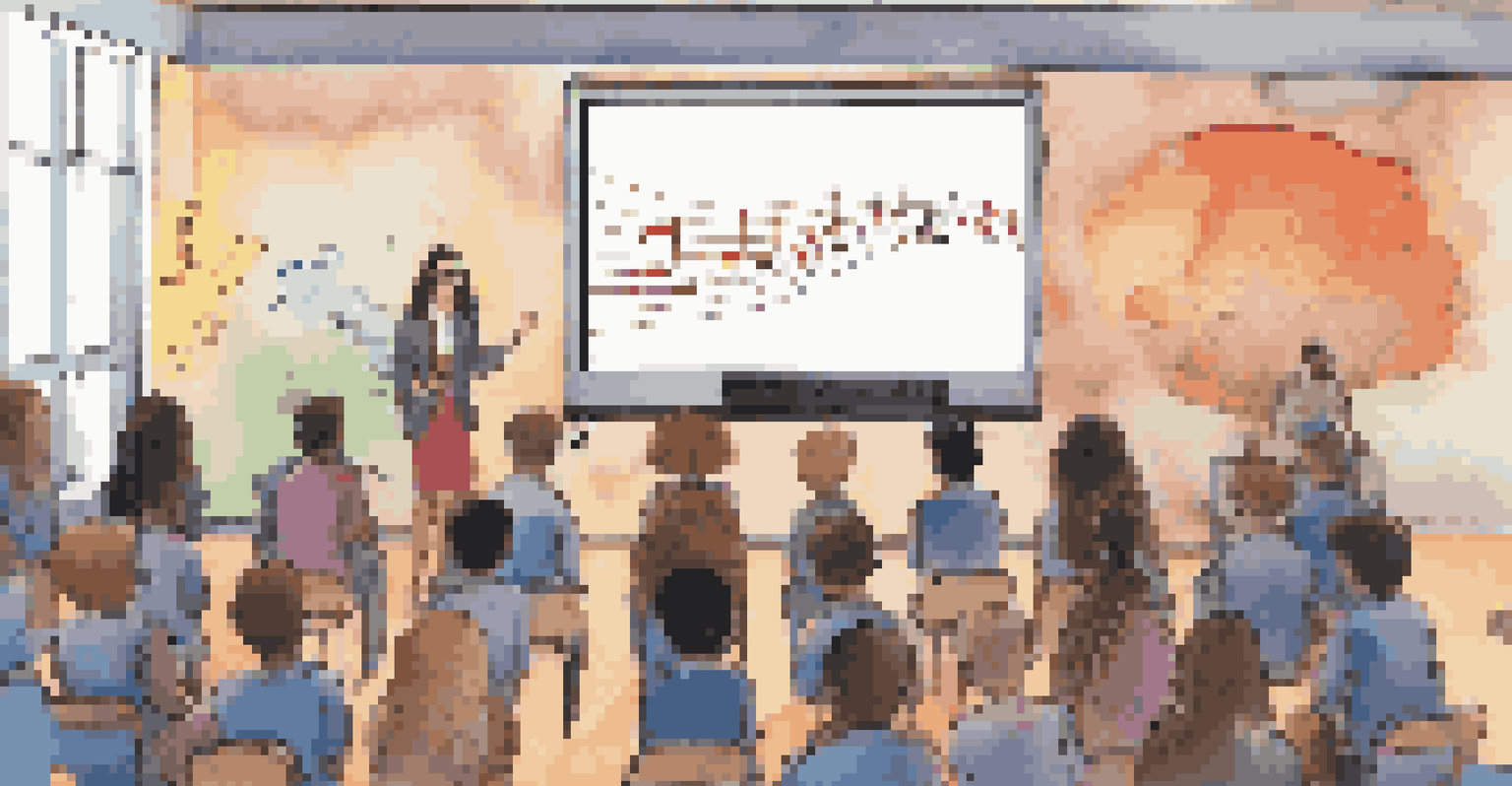Visualizing Sound: Techniques for Representing Audio Visually

Understanding the Connection Between Sound and Visuals
Sound and visuals may seem like separate worlds, but they are deeply intertwined. Just as music can evoke emotions, visuals can amplify the experience of sound. This connection opens up a creative avenue where audio isn't just heard but seen, allowing for a richer understanding of both.
Sound is the vocabulary of nature, and our senses are its interpreters.
Think of a symphony: the crescendos can be represented by rising waves in a visual format. This interplay between auditory and visual elements enhances our appreciation of music and sound, making it more accessible and engaging for everyone.
By understanding how sound can be translated into visual representations, artists and creators can communicate complex ideas and emotions in a more impactful way. It's like giving a voice to the visual world, allowing the sounds to paint pictures in our minds.
The Science of Sound Visualization: How It Works
At its core, sound visualization involves converting audio signals into visual formats. This process often uses software to analyze sound waves, translating their frequencies and amplitudes into images or animations. The result is a visual representation that can help us grasp the nuances of sound more clearly.

For example, a sound wave might be represented as a simple sine wave on a graph, where the height indicates volume and the frequency reflects pitch. This scientific foundation allows artists to experiment with how sound can be depicted visually, enabling a blend of art and technology.
Sound and Visuals: A Powerful Duo
The connection between sound and visuals enhances our emotional experience and understanding of music.
Moreover, the science behind sound visualization has applications beyond art. Fields like education, therapy, and data analysis utilize these techniques to make complex audio information easier to understand, bridging gaps between different forms of communication.
Common Techniques for Representing Audio Visually
There are several popular techniques used to visualize sound, each offering unique insights. Waveforms, for instance, provide a straightforward representation of audio signals, displaying their amplitude over time. This technique is commonly used in audio editing software, allowing users to see the peaks and valleys of their recordings.
The visual is an important aspect of music, and it extends beyond mere representation.
Another widely used method is the spectrogram, which visualizes the frequency spectrum of sounds over time. It creates a rich tapestry of colors, representing different frequencies and their intensities, making it easier to identify patterns and anomalies in audio data.
Finally, data sonification takes the concept a step further by converting data points into sound, creating a bi-directional relationship between audio and visuals. This technique can help audiences recognize trends and insights that might be overlooked in traditional data visualization.
Creative Applications of Sound Visualization in Art
Artists have harnessed sound visualization to create captivating multimedia experiences. By integrating audio and visual elements, they can evoke emotions and tell stories in ways that engage multiple senses. For instance, light shows synced to music create an immersive atmosphere that resonates with audiences on various levels.
A great example is the use of sound-reactive installations in galleries, where visual displays respond to live music or recorded audio. These installations create a dynamic interaction, allowing viewers to experience sound in a new light, quite literally!
Tech Innovations in Sound Visualization
Advancements in technology are making sound visualization more accessible and interactive, transforming various fields.
Moreover, sound visualization can also be an independent art form. Artists like Ryoji Ikeda have made waves in the contemporary art scene by creating pieces that blend sound, light, and mathematics, challenging audiences to rethink their perceptions of audio-visual relationships.
Using Sound Visualization in Education and Training
Sound visualization techniques are proving to be valuable tools in educational settings. By providing visual aids, educators can help students grasp complex audio concepts more easily. For instance, music teachers often use visualizers to show how different notes interact, enhancing students' understanding of musical theory.
In fields like linguistics, sound visualization helps students analyze speech patterns and phonetics. By visualizing sound waves, students can better comprehend the nuances of language, making it an effective pedagogical approach.
Additionally, training programs that involve audio comprehension, such as in sound engineering, utilize these techniques to provide hands-on experience. By visualizing sound, students can develop an intuitive understanding of audio properties, preparing them for real-world applications.
The Role of Technology in Sound Visualization
Technology has revolutionized the way we visualize sound, making tools more accessible than ever. Software applications like Adobe After Effects and Max/MSP offer users the ability to create stunning visual representations of audio with ease. These tools empower artists and educators to explore their creativity while simplifying complex processes.
Furthermore, advancements in artificial intelligence are paving the way for even more innovative sound visualization techniques. AI can analyze audio data and create real-time visualizations, allowing for spontaneous and interactive experiences that were previously unimaginable.
Creative Uses in Art and Education
Artists and educators are leveraging sound visualization techniques to create engaging multimedia experiences and facilitate learning.
As technology continues to evolve, the possibilities for sound visualization are expanding rapidly. This not only enhances artistic expression but also opens new doors for research and education, making sound more comprehensible and engaging.
Challenges and Considerations in Sound Visualization
While sound visualization is an exciting field, it comes with its own set of challenges. One significant hurdle is ensuring that the visual representation accurately reflects the sound being analyzed. Misrepresentation can lead to misunderstandings, making it critical for creators to maintain fidelity to the original audio.
Moreover, the overwhelming amount of data generated from sound can complicate visualization efforts. Sifting through this data to extract meaningful insights requires careful consideration and skill to avoid clutter and confusion in the final product.

Lastly, accessibility is a key consideration. As we strive to make sound visualization more inclusive, it’s essential to develop techniques that cater to diverse audiences, ensuring that everyone can appreciate and understand the beauty of sound.
The Future of Sound Visualization Techniques
The future of sound visualization holds exciting possibilities as technology continues to advance. We can expect more interactive and immersive experiences, where audiences not only see sound but also engage with it in real time. Imagine concerts where the audience can manipulate visual elements through their movements, creating a unique experience for each viewer.
Moreover, as virtual and augmented reality technologies evolve, sound visualization will play a crucial role in creating fully immersive environments. This could transform industries like gaming, entertainment, and education, providing users with a deeper understanding and appreciation of sound.
Ultimately, the future of sound visualization is bright, promising to enhance how we experience audio. As artists, educators, and technologists collaborate, we can look forward to innovative approaches that will redefine our auditory experiences in the years to come.